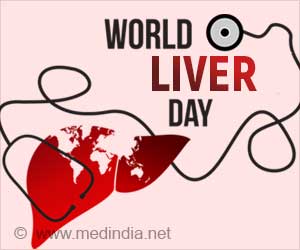- Scientists have developed and evaluated analogs of potent anti-tumor agents called epothilones.
- Anti-tumor drug variations could be effective for treating even drug-resistant cancers.
Most of the compounds that were developed by dozens of variations that were created exhibit potent cytotoxicities against certain cancer cells. This includes a drug-resistant cell line.
The new research was based on the work of Laszio Kurti, a colleague from Rice University, a “powerful reaction” that could offer a simple, scalable and fast method to synthesize aziridine rings from olefins.
Epothilones
Epothilones could prevent cancer cells from dividing by interfering with tubulin proteins that could form the cells skeletal microtubules.
Around 10 of the new compounds were found to be potent against all three cell lines when tests with kidney cancer, two human uterine sarcoma cell lines and one with multi-drug resistance were carried out.
"Our work is directed toward drug discovery and development in collaboration with biotechnology and pharmaceutical companies, particularly in the cancer area."
The newly developed drugs were found to be variations of Epothilone B, a natural compound that is being isolated from Sorangium cellulosum, a slime bacteria that lives in the soil.
The research team found that the total synthesis of several of the natural products and related substances could be too toxic to be used as anti-cancer drugs.
Nicolaou said, "These new results are significant because they represent the discovery of a number of more potent variations of the natural product as cytotoxic agents against cancer cells."
"This brings these members of the epothilone class within range of suitability as payloads for antibody-drug conjugates, a new paradigm for targeted cancer therapy."
He also said that it is the lab’s ability to add chemical “handles” to the molecules which will allow them to be attached to the drug-delivery systems like cancer-specific antibodies.
Reconfiguration of Epothilone B
The researcher compared the reconfiguration of Epothilone B, which is the starting material for their synthesis along with the transplant of body parts. The components in the molecule were found to be replaced to make the designed analogs more effective.
The strategy to synthesize compounds can be described as a kind of chemical surgery.
"The most important structural motif we introduced in these new molecules is the three-membered ring containing a nitrogen atom, a so-called aziridine moiety."
However, the importance of the aziridine ring was not yet clear, and also would serve as a handle to attach the molecule onto an antibody through a linker.
Nicolaou said, "The other structural motif, the so-called side chain with a basic nitrogen embedded at a strategic position, was achieved through new extensions and improvements developed in our laboratories of the previously known HWE (Horner-Wadsworth-Emmons) reaction."
"The HWE reaction is an important process for making olefinic bonds (carbon-carbon double bonds) stereoselectively."
References
- K. C. Nicolaou et al, 12,13-Aziridinyl Epothilones. Stereoselective Synthesis of Trisubstituted Olefinic Bonds from Methyl Ketones and Heteroaromatic Phosphonates and Design, Synthesis, and Biological Evaluation of Potent Antitumor Agents, Journal of the American Chemical Society (2017). DOI: 10.1021/jacs.7b02655
Source-Medindia















